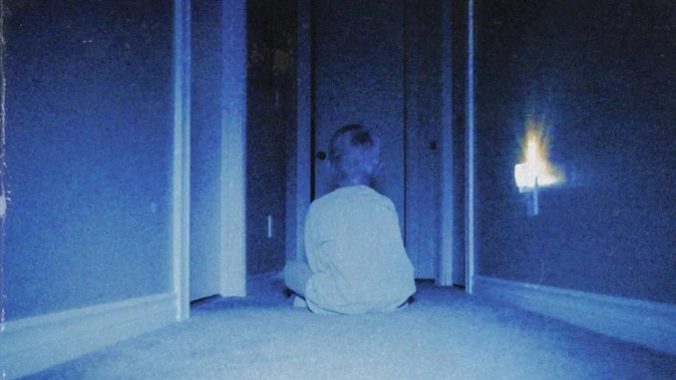Fuzzy Horror Skinamarink Is All It’s Cracked up to Be, and Less
Photos via Shudder
It’s been a while since there’s been something like Skinamarink in theaters. Check that: There has never, in mankind’s history of recorded images on film, been something quite like Skinamarink in theaters. The temptation would be to correlate the release of this zero-budget piece of experimental horror with the likes of Paranormal Activity in 2009, but Paranormal Activity, for all its lo-fi found footage trappings, was still a conventional (but cleverly constructed) narrative. When it comes to Skinamarink, on the other hand, convention flies out the window. This is a daring, unsettling, inscrutable and at times deeply boring venture into the farthest boundaries of horror esotericism, utterly unlike anything that most viewers will have ever seen before. If someone hosted a filmmaking competition where the stated goal was to engineer a work as divisive as it possibly could be, surely Skinamarink would be a shoo-in to win the grand prize.
Created on a budget of $15,000 (Canadian!) as the feature debut of filmmaker Kyle Edward Ball, and dedicated to assistant director Joshua Bookhalter, who passed away during post-production, Skinamarink is an exercise in experimental, sensory-driven horror filmmaking. Now, when one says “sensory-driven” in this context, one might expect that to imply a certain lushness that overwhelms the senses, a la James Cameron’s approach in Avatar: The Way of Water. Skinamarink, however, is more like the opposite—the film’s ultra grainy visual aesthetic and muddy audio (with cleverly hardcoded subtitles) slowly but surely hypnotizes the viewer into a state of heightened suggestibility, until the viewer’s mind begins to provide its own hallucinatory meaning to what it is seeing. In the same sense that a sensory deprivation chamber often provokes spontaneous images and sounds in a human brain struggling to make connections without stimuli, so Skinamarink sweeps you away to your own private nightmare. Assuming you don’t fall asleep, that is.
That’s the thing with Skinamarink—it’s going to be experienced in vastly different ways by each viewer, dependent upon factors such as innate suggestibility, attention span and the context of its screening. One can’t have a conversation with a friend during Skinamarink and hope for it to have the intended effect. One can’t watch the film in a room flooded by light, or between furtive glances at a smartphone. It just doesn’t work that way, any more than a guided meditation would work with constant interruptions. Skinamarink demands you surrender yourself to its particular style of somnambulistic viewing, preferably in a pitch black room … by yourself, while anyone else in the house is asleep. That’s the setting that will best allow the film to get its claws in you, gripping with the exhilaration of tension and terror that all true horror geeks are forever chasing, but rarely succeed in locating.
Ostensibly, Skinamarink is about a pair of siblings: four-year-old Kevin and six-year-old Kaylee. They live in an unassuming little house with their unseen father, with the status of Mom a veiled mystery that hints at pain and separation. One night, they awake to find that the house seems changed—doors and windows have disappeared, and any parental presence is missing. Objects are strewn around in seeming patterns, while a deep, gargling voice whispers from the darkness. The only light is provided by the ever-present glow of the TV set, playing a loop of public domain cartoons from the 1930s. We’re informed that the year is “1995,” though that piece of context seems entirely without meaning or importance to the hazy events captured on screen. Rather, it’s merely intended as an invitation for the presumed millennial horror viewer to thrust themselves back in time to the consciousness of their childhood self, to revisit locked-away feelings from a time when one’s brain is anything but fully formed.
-

-

-

-

-

-

-

-

-

-

-

-

-

-

-

-

-

-

-

-

-

-

-

-

-

-

-

-

-

-

-

-

-

-

-

-

-

-

-

-








































